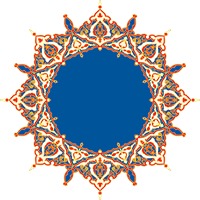Surah al-Mu’minun

- 18پارہ نمبر
- 118آيات
- 6رکوع
- 74ترتيب نزولي
- 23ترتيب تلاوت
- مکیسورہ
In the Name of Allah, the Most Compassionate, the All-Merciful
1. Indeed, the believers have prospered.
قد أفلح المؤمنون
(الْمُؤْمِنُوْن، 23 : 1)
6. except with their wives or whom their right hands possess (i.e. the female captives in their lawful custody), for then they are not blameworthy;
إلا على أزواجهم أو ما ملكت أيمانهم فإنهم غير ملومين
(الْمُؤْمِنُوْن، 23 : 6)
12. Indeed, We created human being from an extract (i.e. the chemical ingredients) of clay.*
* Dust comprises minerals, metals, salts and other chemical elements such as calcium, sodium, phosphorus, potassium, silicon, chlorine, iodine, fluorine, magnesium, zinc, sulphur, iron, etc. These and other clay elements also form a balanced diet essential for nourishment. The animals whose meat and milk we consume graze upon vegetation. The grains, vegetables and fruits that constitute our diet benefit from the soil they grow in and absorb all its chemicals.
ولقد خلقنا الإنسان من سلالة من طين
(الْمُؤْمِنُوْن، 23 : 12)
13. Then, We placed him as a fertilised egg (i.e. a zygote*) in a secure abode (of the mother’s womb).
* In Arabic, the word ‘al-nutfa’ is mentioned, and it refers to a zygote, which is a mixture of male and female gametes. It is the new single cell formed after the union of a sperm and ovum.
ثم جعلناه نطفة في قرار مكين
(الْمُؤْمِنُوْن، 23 : 13)
14. Then We made that zygote a clinging mass.* Then We developed that clinging mass into a lump of flesh (chewed with teeth). Then, out of this chewed lump, We developed a structure of bones and clothed the bones with flesh (and muscle). Later, We developed it (gradually) into a new form. So blessed is Allah, the Best of creators.
* The word ‘alaqa’ in this verse describes the human embryo from days 7–24, which clings to the endometrium of the uterus in the same way that a leech clings to the skin. Just as the leech derives blood from the host, the human embryo derives blood from the decidua or pregnant endometrium. It is remarkable how much the embryo of 23–24 days resembles a leech. No microscopes were available in the 7th century, so none would have known that the human embryo at this stage was clinging to the endometrium and had a leech-like appearance.
ثم خلقنا النطفة علقة فخلقنا العلقة مضغة فخلقنا المضغة عظاما فكسونا العظام لحما ثم أنشأناه خلقا آخر فتبارك الله أحسن الخالقين
(الْمُؤْمِنُوْن، 23 : 14)
17. And certainly, We have created above you seven tracks.* And We have never been heedless of (Our) creation.
* Seven tracks may refer to the seven heavens, being above one another, according to the description of traditional cosmology. It may also refer to the paths of the five visible planets, including the sun and the moon, or the celestial spheres in which the sun and the planets move, traditionally known as ‘aflak’. Another possible meaning could be the seven magnetic fields around the vast atmospheric expanse of the earth for safeguarding the cosmic system.
